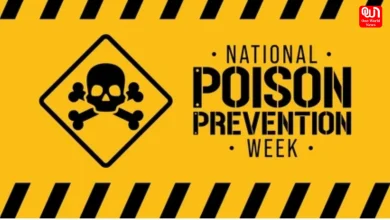Stop Fake News: 6 Rules to Fact Check the Validity of your News

Fake News Will only End When You Will Start Checking the Facts. Here 6 Rules to Fact Check the validity of your news
When fake news is repeated, it becomes difficult for the public to discern what’s real. – Jimmy Gomez
As rightly said by Jimmy Gomez, fake news when repeated takes away the boundaries of what’s fake and what’s real. But it all starts from fake news getting repeated. Fake news traveling from one door to another by people who consume and share news brainlessly. And while it is a sorry state that fake news is produced and is existing, the only way how fake news can be stopped is by mindfully consuming news and fact-checking before sharing anything. So, here are the 6 thumb rules to fact-check the validity of the news you are consuming. Also remember, less information is always better than false information.

6 Rules to Fact Check the Validity of your News
1. Check these things before even reading the news piece
Even before you start reading a news bit, the first thing you would be needing to do is check – 1)Understand the different meanings the headline can have 2) the credentials, 3) the one publishing it, 4) the date and time of publishing, and 5) About the publishing company (check the about section to know about the organization who has published the piece.)
2. Question Everything you Read in a Report
The next step you need to follow while reading or watching any news piece is the question of the validity of the whole report. Question everything you are reading. Ask simple questions like –
– Who has reported that information? Are there any credentials mentioned? Is it by some news media organization, by a credible news creator, or by some IT cell?
– Who has shared the report? Is it by a credible person or just a WhatsApp forward?
– Why is the information being shared with you? Is it in the public interest to inform you or there is some underlined idea?
– Is it coming from a source that holds credibility, and is trustworthy too.
Well, if you will hit the right answers to questions like these, you will subconsciously get an idea for yourself, if it is fake or intentionally being shown to you. And if there is even a percent of doubt, you’ve got to fact check.
Read More: Mental health crisis rises during Pandemic

3. Understand the difference between facts and claims
Whatever news you are consuming, try to analyze the tone of that news. What is the news report trying to say? Is the thing being told, facts, or just claims coming out of what a person/organization wants to tell? Anything that is sounding like a claim, which is not backed by any source is a claim and not a fact.
4. Follow CRAAP Test – Currency, Relevance, Accuracy, Authority, and Purpose
If anything in a news piece is looking fishy, the thumb rule for that piece is to follow the CRAAP Test. Check the currency, relevance, accuracy, authority, and purpose of news. If any of these is missing, the news is not reliable.
5. Try to cross-verify your news from other sources
If you are finding anything not so credible in the piece you are reading, but feel that the information is important, then cross-verify it with other sources. Read from different sources, make an analogy of what all of them are trying to say. If there are similarities, then there are chances that the news is true. If not, then don’t get swayed away with fake news.
6. Think before you share
Last but not the least, always be a hundred percent sure of the validity of any news before sharing it. If there is even a thin line of doubt, skip sharing it.
Have a news story, an interesting write-up or simply a suggestion? Write to us at info@oneworldnews.com







